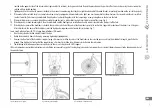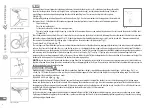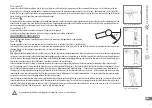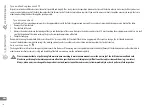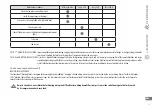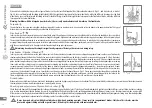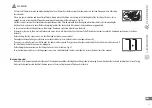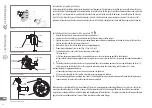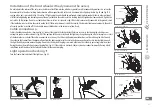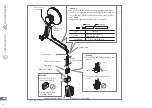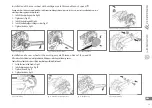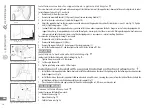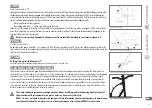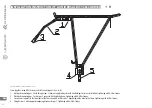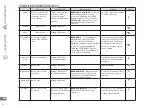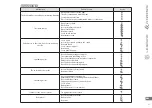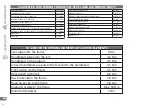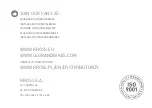
21
EN
LIGHT
Light operation
Lighting is one of the basic elements of bicycle user safety and it must be installed. If you intend on riding in low visibility conditions, make sure that
the lighting works properly. Bicycles equipped with a lighting set ( lamps) have electric installation of 6 V, 3 W. In case of bulb replace-
ment, remove the lamp cover installed using screws or a latch. Lamps use bulbs of 6 V, 2,4 W in the front and 6 V, 0,6 W in the back. In case of lamp
removal and cable disconnection, during re-installation one must remember about proper connection of lighting cables:
• White-striped cable, minus (ground)
• Non-striped cable, plus (+), according to markings on the lamp.
In the case of LED lighting instead of incandescent lamps they are equipped with LEDs that can not be exchanged. LED life is up to 50 000
hours.Battery Lighting - has built-in batteries that power. Each time before setting off, check the correct operation of the lighting. In the
case of usethe battery must be replaced.
Batteries are a product deemed to be dangerous, after use should be discarded in a container assigned to it.
Fig. 78. Lever unlocking
Fig. 79. Lever motion and frame folding
Pedal installation
Do not tighten the pedals manually – use a spanner (15 Nm). The pedal marked with the “R” letter is the right bicycle pedal, while instal-
ling it onto the crank, turn the pedal clockwise. The pedal marked with the “L” letter is the left bicycle pedal and while installing it onto the
crank, turn the pedal counterclockwise.
PEDALS
Setting the adjustable stand
Stretch the stand at the appropriate length so the bicycle stands on its own, Fig. 80 and Fig. 81.
STAND
Fig. 80. Stretching the support out
Fig. 81. Stand adjustment
80
0
CLEANING AND MAINTENANCE
The bicycle must be maintained in good technical condition and the user must remember about regular cleaning. The bicycle must be
cleaned after every 200 km and in case of riding in rain – after each such ride. It is advised to clean the bicycle thoroughly at the beginning
and end of season. Dirt is removed using a wet sponge or cloth often drenched in water. Do not clean the bicycle dry, this may lead to
scratching of varnished surfaces. Washed bicycle should be dried using a clean cloth. Do not clean the bicycle using a strong stream of
water or water vapour at close distances, because penetration of water vapour to bearings is very probable, as well as increased friction,
faster wear and corrosion. In the case of contact with cleaning agents and chain oil (grease) with brake pads, rim walls, brake discs, the
brakes may operate very inefficiently and result in an accident.
The frame and bicycle components undergo wear. Any breaks, scratchings and varnish peeling may hint at wear of
the given element. Replacement of worn parts is necessary because of cyclist safety.
KROSS S. A. does not equip its bicycles with spare parts. More information about proper bicycle use and maintenan-
ce may be obtained on the www.kross.eu site or from an employee of an authorised KROSS service station.
unlock lever
move the lever
fold frame
arm
fixing screw
stretch out

